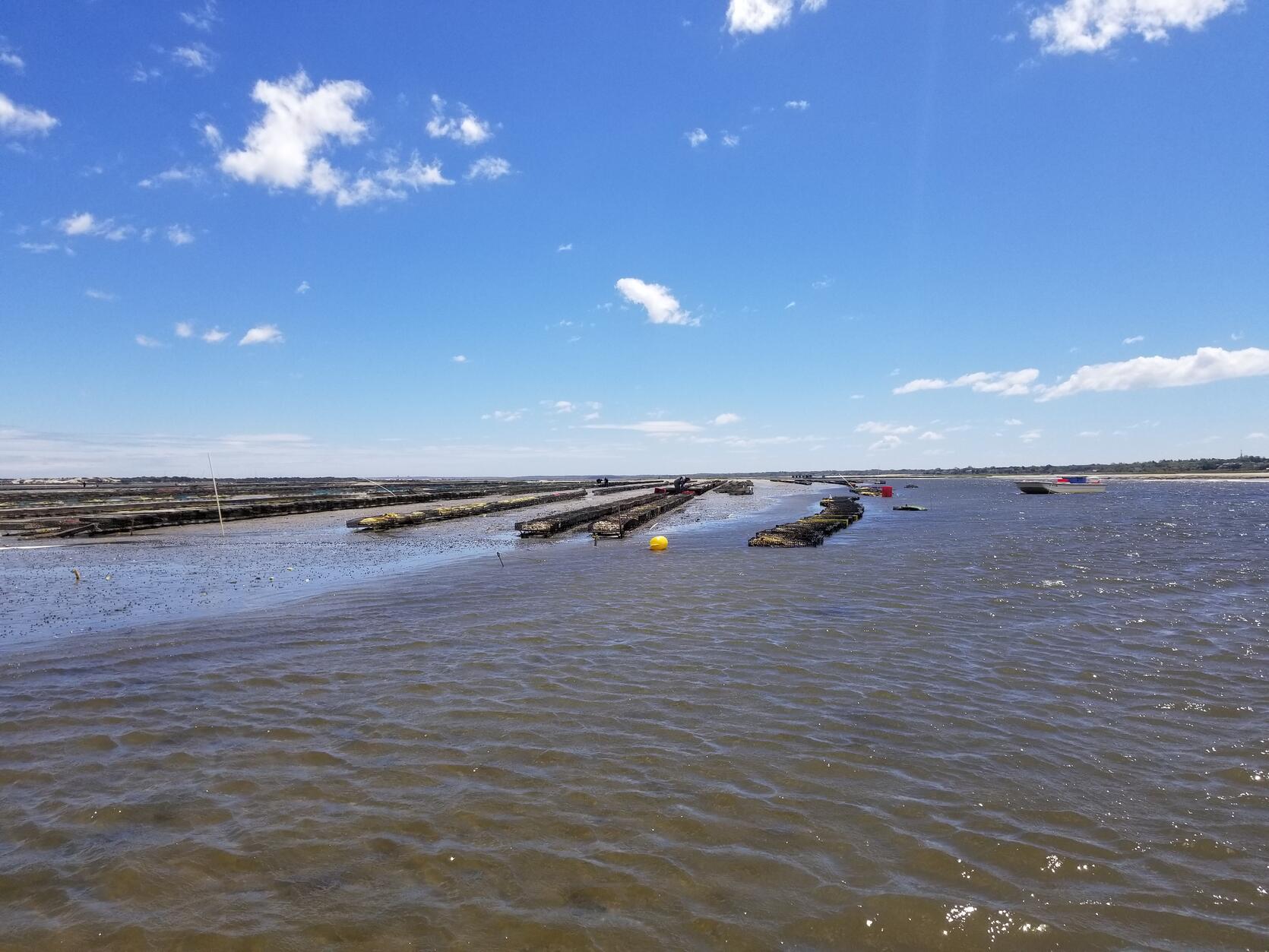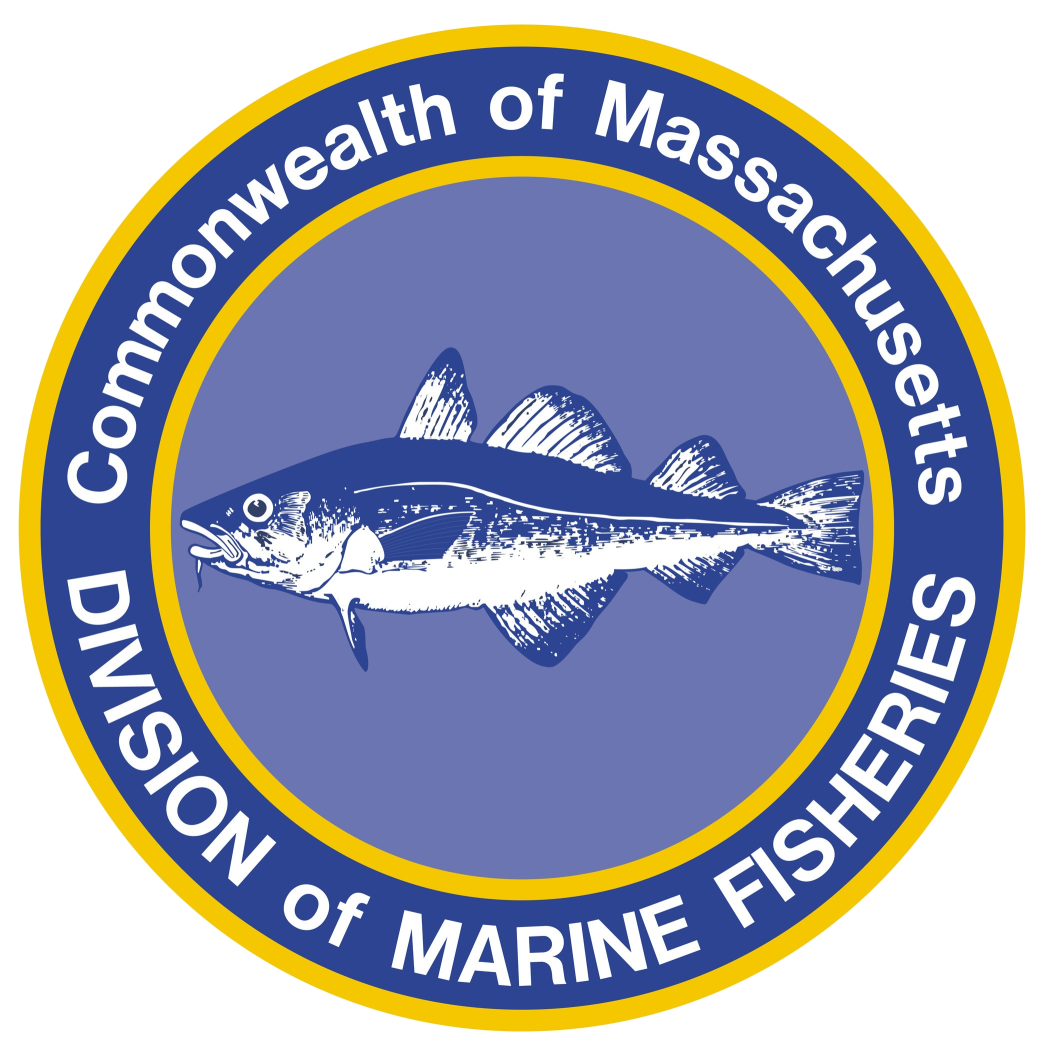- Division of Marine Fisheries

DMF’s Shellfish Program has risen to the challenge of managing one of the nation’s most productive shellfisheries during the ongoing national pandemic. Adept at emergency response, staff provided uninterrupted essential services to program partners and the public. Resources have focused on core program functions including classification of growing areas, laboratory services, aquaculture, contaminated harvest management, restoration, and administration.
Growing Area Classification: All primary classification activities have continued through a combination of field, office, and telework. Classification biologists are still collecting water samples to monitor over 1.5 million acres for fecal coliform contamination, keeping areas open to harvest. On average, shellfish staff collect around 10,000 water samples annually often with assistance from local shellfish constables or other DMF staff. Field surveys for pollution sources, suspected failed septic system leaks, reported sewage bypasses, and marina evaluations have also been conducted.
Biologists continued to provide technical support to DMF’s Environmental Review project addressing proposed coastal alterations that could impact shellfish habitat. Fortunately, it has been a quiet year for harmful algal blooms (HAB) in Massachusetts waters apart from a near-annual spring red tide (PSP) closure in the Nauset marsh system. PSP (paralytic shellfish poisoning) is monitored by shellfish staff weekly from April through mid-October, predominately through the collection and analysis of blue mussels from designated stations. Our year-round phytoplankton monitoring not only surveys for PSP HABs but for others that could threaten human health including Pseudo-nitzchia, a species of phytoplankton that produces neurotoxins causing amnesic shellfish poisoning (ASP). Notifications regarding growing area status can now be carried out from home thanks to state investments in upgraded software services. Additional program technological improvements that will occur early in 2021 include dynamic shellfish growing area maps on the Division’s website and mobile-based tools for field data collection.
Laboratory: The heart of the Shellfish Program, our shellfish laboratories provide invaluable data used to manage our state’s shellfishery. Amidst pandemic restrictions on in-person work, staff coordinated schedules to keep open all three labs (Newburyport, Gloucester, New Bedford). Our Newburyport lab has continued researching new viral testing methods in partnership with the Gloucester Marine Genomics Institute in addition to monitoring depuration and wet storage shellfish lots. Gloucester lab staff have made it possible to perform water quality tests on weekends and continue the seasonal biotoxin assay program that monitors PSP levels statewide, processing a total of 371 PSP samples this year. The New Bedford lab was still able to process high volumes of routine classification water samples while testing oysters for the human pathogen Vibrio parahaemolyticus, wrapping up a three-year study by the Shellfish Program and the University of New Hampshire. Our lab managers even received a Department of Fish and Game Performance Recognition Program Citation for not only maintaining workloads but advancing program priorities during the pandemic.
Aquaculture: The Aquaculture Project balanced applicant support and Vibrio control plan tasks with the addition of supporting pandemic economic relief programs. Staff continued to process applications for new and renewed permits, certify 16 new aquaculture site licenses, and establish this year’s Vibrio Control Plan in partnership with MA Department of Public Health. There were no Vibrio related closures required this year. In collaboration with DMF’s Habitat Program and other permitting agencies (e.g., DEP, MEPA, USACE), an online tool was completed as part of the Massachusetts Aquaculture Permitting Plan (MAPP) to assist applicants navigating the complex multi-agency aquaculture permitting process (www.massaquaculturepermitting.org). A substantial amount of time in March was invested fielding calls from growers desperate to find alternative markets for cultured oyster product or to resubmerge harvested oysters when their primary market collapsed in response to the closure of all restaurants in the state to on-site dining due to COVID-19.
A major focus of staff energy has been addressing numerous state and private aquaculture pandemic stimulus programs. A total of $1,152,652 was distributed to members of our hard-hit aquaculture industry as part of the DMF CARES Act Fisheries Relief Program (see page 1). We are also supporting two external programs which involve the purchase of oversized oysters from culturists for outplanting. The Nature Conservancy and Pew Charitable Trusts’ Supporting Oyster Aquaculture and Restoration (“SOAR”) program involves purchasing surplus oysters to bolster oyster reef restoration sites. A Woods Hole Sea Grant and Cape Cod Cooperative Extension COVID-19 relief project is focused on providing funds to Barnstable County municipalities to purchase oysters from local growers for transplant into municipal recreational shellfishing beds. Through these opportunities, DMF remains committed to the survival and success of our culturists in this year and beyond.
The decline of restaurant sales during the pandemic has left wild harvesters and aquaculturists with a surplus of product. In response, DMF’s Permitting Staff have been assisting the town of Wellfleet shoe-horn a request to allow direct sales of shellfish to consumers. DMF created a model consistent with the joint DMF/DPH “shellfish at Farmer’s market” policy where wholesale dealers could play a role in a scheduled on-site event. This creates the feel of buying direct and in fact the pre-ordering allows customers to order a particular grower’s oysters. This model is transferable to other communities and involves local Boards of Health similar to a retail store or a typical farmer’s market.
Contaminated Harvest Management: DMF’s softshell clam depuration fishery on the North Shore and quahog relay programs in Taunton River form our contaminated harvest program. The Newburyport Shellfish Purification Plant staff have evolved safety and sanitation protocols throughout the pandemic to keep everyone safe while maintaining its operating hours. Plant staff remain committed to providing year-round depuration services which has been crucial for the steady return of harvest of soft shell clams throughout Greater Boston Harbor and the Pines River.
Despite a late start (June rather than April), the contaminated shellfish relay program occurred, ending in mid-November. Ten municipalities participated in the spring, relaying quahogs from various sites in the Taunton River including Fall River, Somerset, Freetown and Dighton. Another five municipalities relayed within local waters over the course of the season. Most of the transplanted quahogs will be harvested this year pending fecal coliform analysis from the DMF lab demonstrating levels have been reduced significantly. Another five communities participated in the B-120 mitigation project (part of the response to an oil barge spill that occurred in 2003) and to date a total of 25,600 bushels of quahogs have been relayed into restoration sites throughout Buzzards Bay. B-120 restoration sites remain closed to recreational fishing for one to three years.
Restoration: Since 2014, Shellfish Program staff in New Bedford have been involved in two major shellfish restoration and mitigation activities in Buzzards Bay: the New Bedford Marine Commerce Terminal Quahog Mitigation Project and the Buzzards Bay Shellfish Restoration Project. An estimated 9.8 million quahogs were lost because of the filling and dredging activities involved with the creation of the terminal. To date, Division staff have planted more than 3.2 million seed quahogs within pre-selected mitigation areas (16.6 acres total). In addition, DMF staff have overseen the relay of more than 4,500 bushels of adult quahogs to a 21-acre mitigation site off Fort Tabor in New Bedford Outer Harbor. Agency staff have continued to monitor the survival and growth of planted quahogs this year.
The Buzzards Bay Shellfish Restoration Project consists of three restoration strategies to restore shellfish to the region to recover from damages sustained from the grounding of the B-120 oil barge in 2003. As mentioned above, contaminated quahogs have been relayed from the Taunton River to designated transplant sites within the municipal waters of Bourne, Dartmouth, Fairhaven, Gosnold, Marion, Mattapoisett, New Bedford, Wareham, and Westport. Shellfish Program staff assist shellfish officials in each town with the selection and assessment of relay sites. Restoration staff have continued supporting the towns of Wareham, Dartmouth, and Fairhaven with the operation and maintenance of floating upweller systems (FLUPSYs) purchased with B-120 funds to grow small quahog seed. The quahogs are out-planted in recreational shellfishing areas once they reach a larger size. Finally, program staff have continued work with Bourne, Marion, and Wareham’s oyster propagation programs. This includes technical support on rearing seed, purchase of adult stock, and survival assessment from FLUPSY to flat and beyond.
Massachusetts Shellfish Initiative: Since 2017, the Massachusetts Shellfish Initiative (MSI) has worked towards a robust plan to improve the state’s shellfisheries informed by a collaborative team of stakeholders. Division staff remain very active in the MSI as it continues towards completion with development of a strategic plan as a derivative of the Assessment and Scoping Committee Reports. Read the MSI Update below for more information.
By Greg Sawyer, Tom Shields, Chrissy Petipas, Sue Boehler, Diane Regan, and Devon Winkler, Shellfish Program Staff
